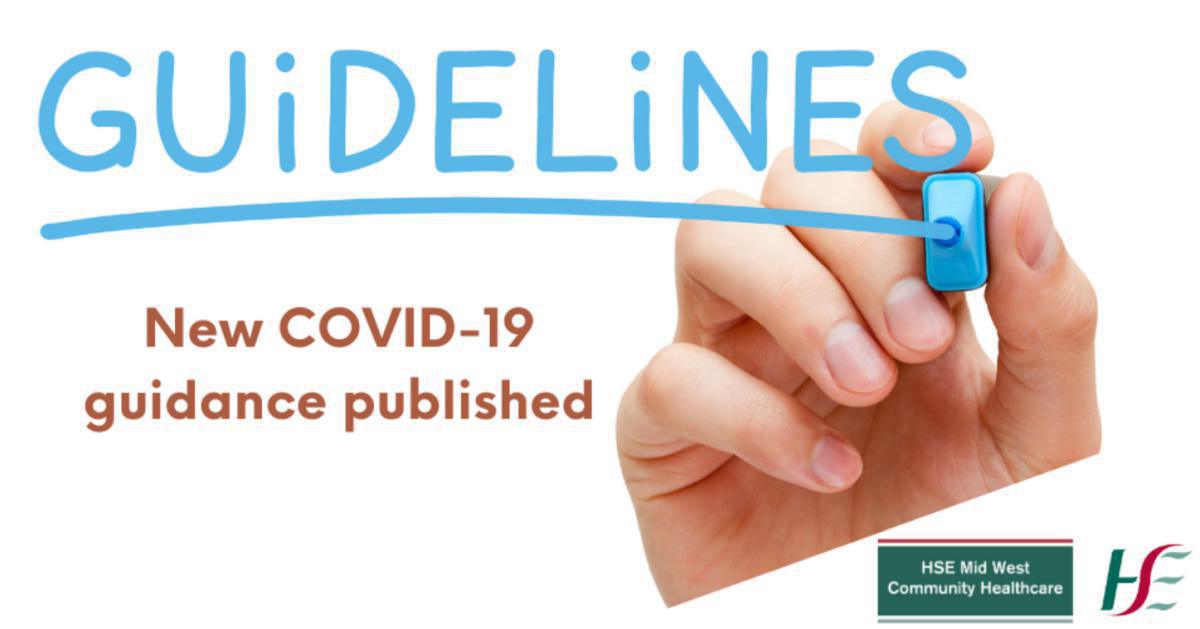New COVID-19 guidance published
Since the start of the pandemic the HSE’s Antimicrobial Resistance and Infection Control (AMRIC) has published or updated over 100 guidelines and protocols to help healthcare staff, service providers and the public reduce the spread of COVID-19. Three important new guidelines have been published this month and one update that reflect the Government Framework levels 1 – 5. Please familiarise yourself with guidance that is relevant for your service.
The new guidance recognises that older people and others at high risk from COVID-19 (extremely medically vulnerable people) have the right to make their own decisions and the responsibility to look after their own health and the health of others. This involves making their own choices about how they keep a balance between doing the things they need to do and want to do to while keeping the risk of harm from COVID-19 as low as is practical. The guide is also written to help family, friends and carers to help people who may need their support in making choices and in doing what they chose to do as safely as is practical. It is about the choices people can make to lower the chance of harm to them and to those they care most about in practical and reasonable ways without making life impossible to bear.
Note this document replaces a previous document “Guidance on cocooning to protect people over 70 years and those extremely medically vulnerable from COVID-19”.
2 Acute hospital inpatient visiting (new)
This new guidance is relevant to inpatient areas of acute hospitals including children’s hospitals, rehabilitation units, specialist palliative care inpatient units and maternity services. It should be considered in the context of the current overall guidance for control of spread of COVID-19 in acute and children’s hospitals and the Interim Guidance on Infection Prevention and Control for the HSE (see www.hpsc.ie). Services provided by maternity hospitals and hospital services for children differ from general hospital services. Sections 1.4 and 1.5 of the new guidance addresses issues specific to those settings.
A key part of the new guidance is setting out advice on responding to requests for critical and compassionate visits to inpatients. Critical and compassionate circumstances are difficult to define and of necessity require judgement. The term should not be interpreted as limited to circumstances when the death of a patient is imminent. A compassionate approach to care is relevant in all settings but has particular relevance to specialist palliative care inpatient units. The guidance outlines some examples of critical and compassionate circumstances that will help staff to make decisions.
3 Disability Services Visiting Guidance (new)
Residential services for people with a disability are based largely in own-door supported accommodation or small group homes (comprised of 6 individuals or less living in the house). These facilities are fundamentally different from large congregated care settings both in terms of risk and the needs of the individual and require a specific approach. Restrictions on visiting are of themselves a source of stress for individuals, their friends and families. Any lack of clarity regarding the visiting arrangements and the reasons for them exaggerates the stress and is avoidable. This new guidance outlines an approach based on a risk assessment to address visiting residents and also visits from residents to their family homes (or similar setting).
4 Long term residential care facilities guidance (updated)
Restrictions on visiting are of themselves a source of stress for residents, their friends and families. Any lack of clarity regarding the visiting arrangements and the reasons for them exaggerates the stress and is avoidable. It is essential that the service providers engage with residents, involve them in decision making and communicate clearly with each resident and relevant others regarding visiting policy including any restrictions, the reasons for those restrictions and the expected duration of restrictions. It is important that visitors are clear that they must accept personal responsibility with respect to the risk that they may inadvertently be exposed to infection during the visit and that their safety depends in a large measure on their behaviour during the visit



